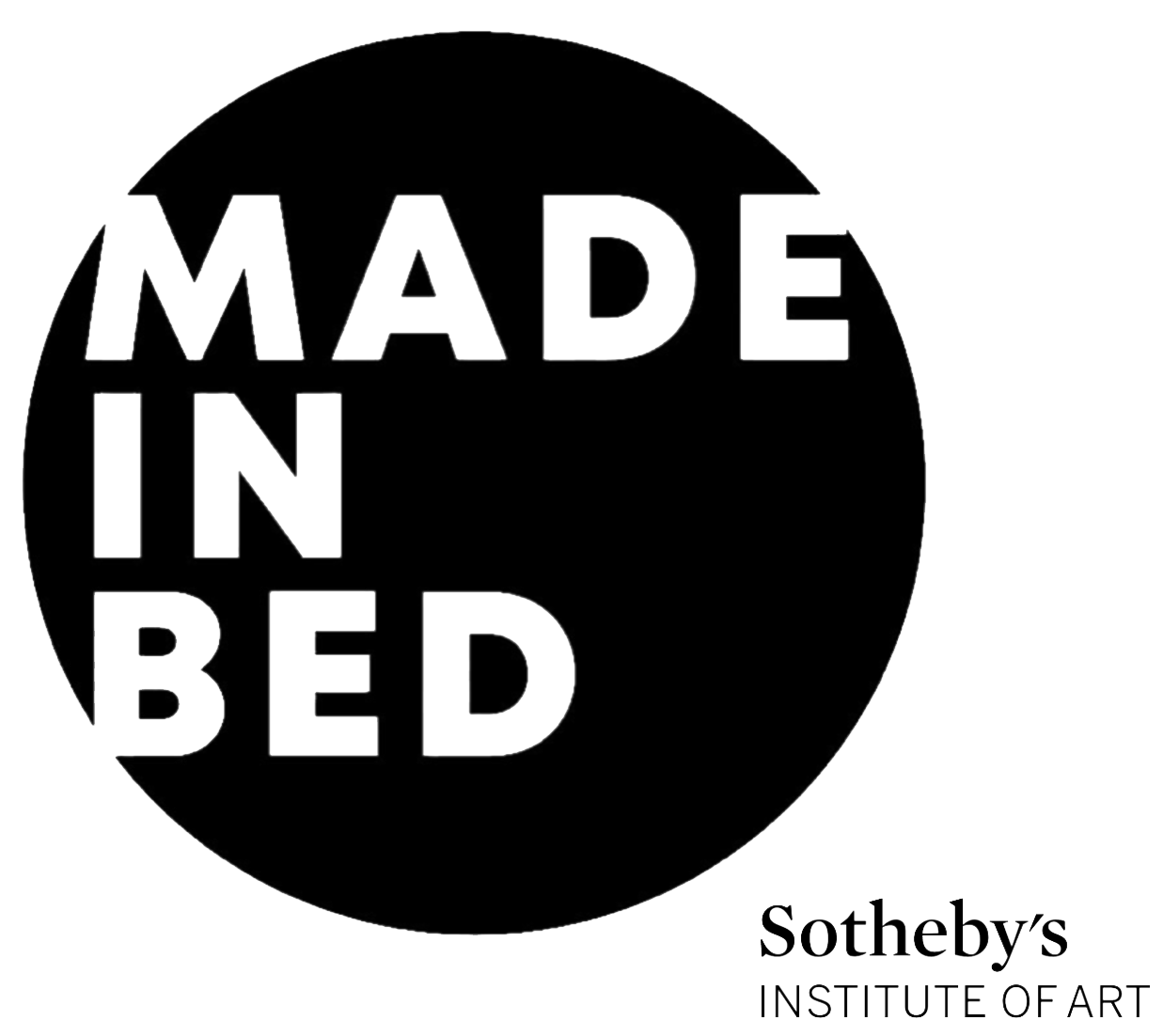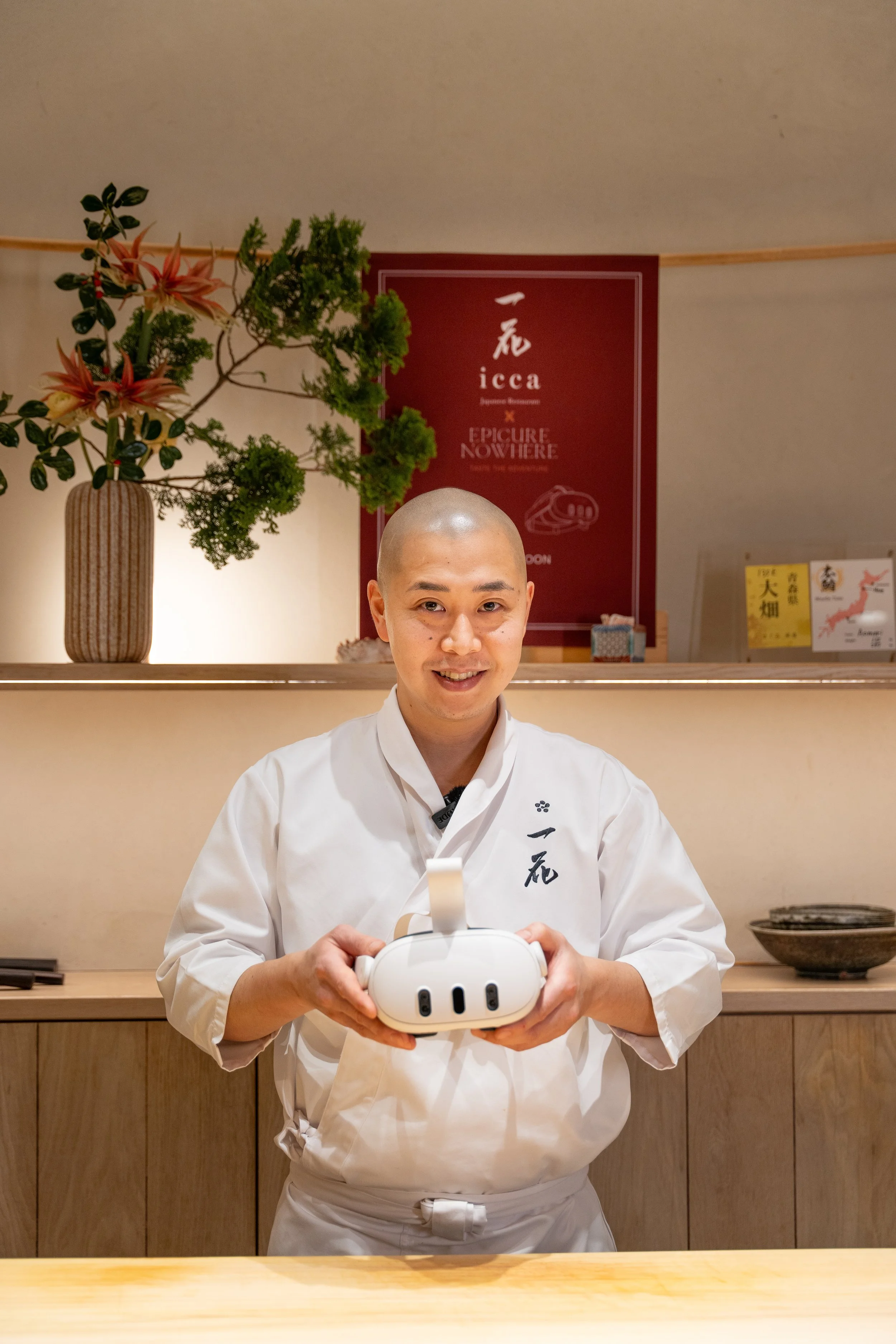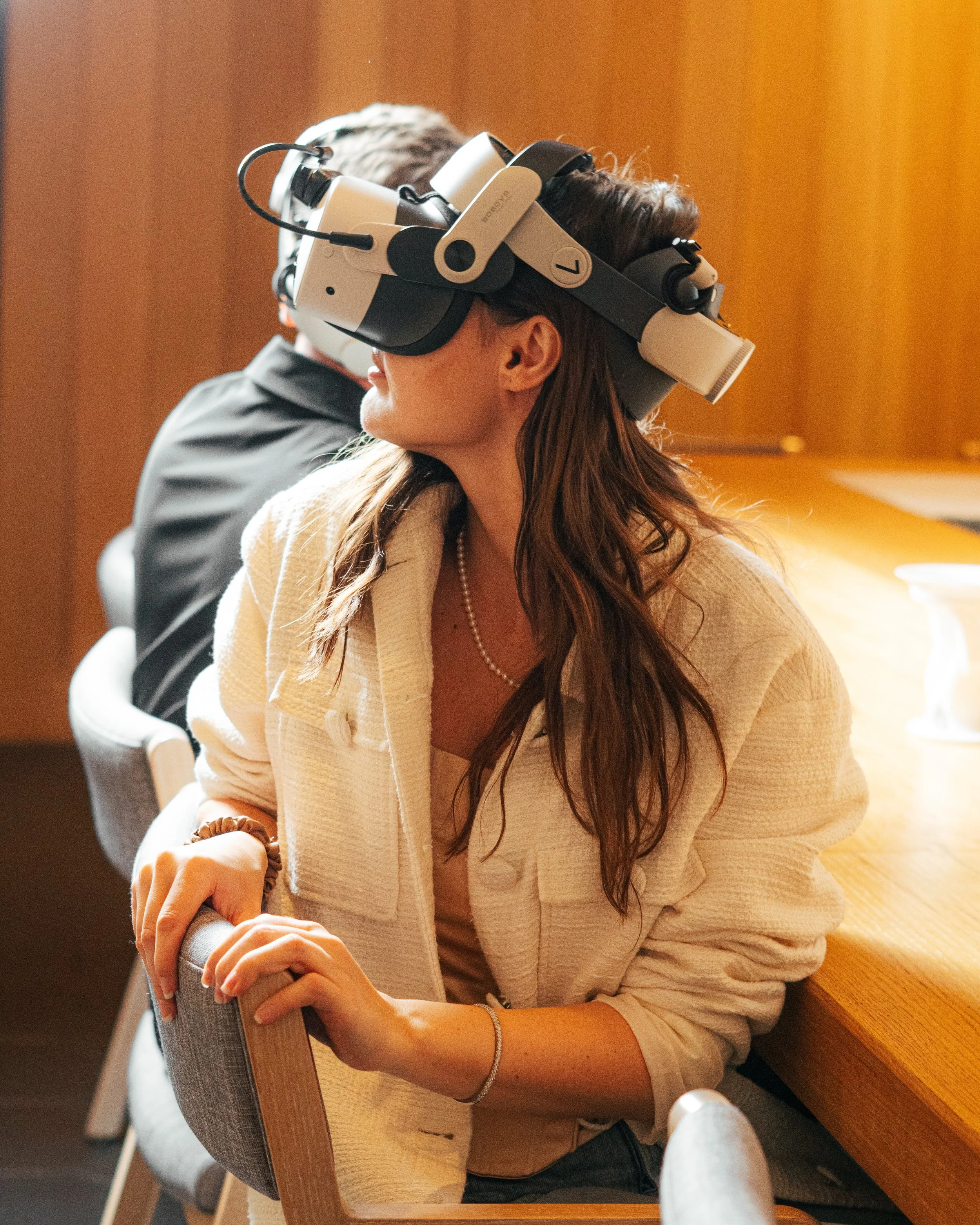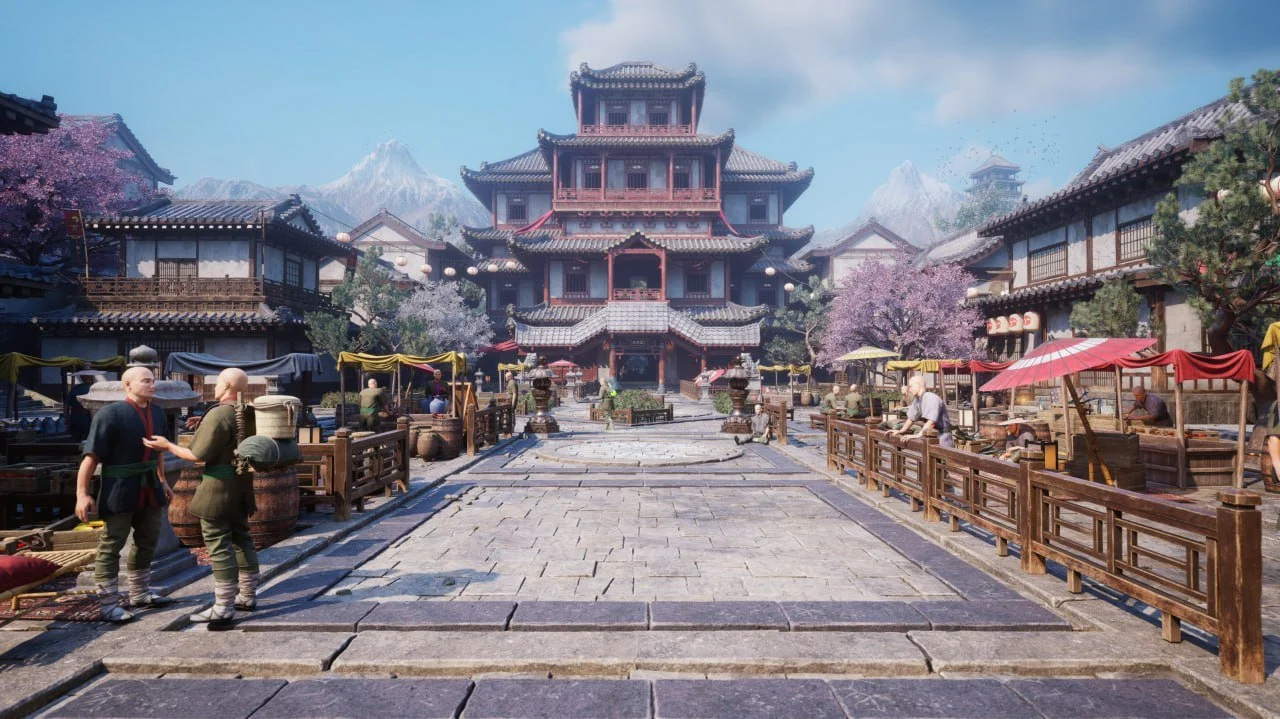Curators of Impossible Feelings: the First Michelin-Starred VR Omakase
A project at the edge of art, hospitality, and technology, EPIC.NOW was built on the belief that the senses—taste, scent, sound, and light—could become the instruments of a new kind of artistic storytelling. Co-Founder and Sotheby’s Institute of Art alum, Elizaveta Petrova, describes the inception of her latest project.
EPIC.NOW in New York. Photo Courtesy: Elizaveta Petrova.
What is composition beyond the canvas? In art, the term suggests arrangement—line, color, rhythm, form. But it’s also structure, tension, silence, pacing. Hilma af Klint’s spirals, James Turrell’s light spaces, Ryoji Ikeda’s sonic pulses—each use different mediums to evoke an internal architecture. You don’t just observe these works. You experience them. They pull you in, then slow you down.
Contemporary artists are increasingly working across senses: sound that feels like sculpture, video that reads like poetry, and fragrance that activates memory. This expansion isn’t new - what’s changing is the audience’s willingness to follow. We’re no longer satisfied with art that stays still. We want to step inside it, experience it, and be changed by it.
In this expanded field, composition becomes something more than technical arrangement. It becomes a way of holding feeling across forms. To compose is to translate a mood and to shape time and space around an emotion. This is where curation begins to overlap with performance, and where storytelling becomes physical. Some artists are working in light. Some with emerging technological mediums that bend perception. Others in the quiet space between sensations. All are asking: how can we move people differently?
It’s within this context that a different kind of project began to take shape. EPIC.NOW combines elements not typically seen together: food, sound, virtual reality, and scent.
We began with a question: what if a dining experience could make you feel the way a memory does? Not just through taste, but through sound, light, scent, and story. What if the restaurant could become a stage and the dish, a moment of narrative? What if the senses weren’t supporting players—but the art itself?
Guests taking in the VR sights that accompany each dish at EPIC.NOW. Photo Courtesy: Elizaveta Petrova.
These questions led to an unlikely collaboration between two co-founders: Nikolai Popov, with a background in music television and entertainment, and Elizaveta Petrova, with roots in art curation and hospitality. Together, we assembled a team of worldbuilders: cinematic VR directors Grigory Chizhevsky and Ekaterina Kushnir, composer Vasily Beylin and Michelin-starred chef Kazushige Suzuki of Icca restaurant. The project became a kind of creative laboratory. The medium? Emotion.
EPIC.NOW is a multi-sensory experience from New York, presenting the first ever VR Michelin Omakase Experience. It unfolds in eight scenes. Between each course, guests enter a VR world. Each scene includes its own music, scent, visual landscape, and a dish designed in rhythm with it all. It isn't a theatre. It isn’t a gallery. It isn’t a meal. And it isn’t trying to be. It is something in between.
The process was slow. Pensive. Intuitive. We didn’t storyboard, we sketched moods. We asked: what does it feel like just before the world begins? What kind of sound lives inside silence? What flavor captures the moment you realise you’re evolving.
The first act, The Beginning, opened with fried mackerel, plum and shiso. A single bite that cracked through space like a comet. In VR, planets turned in slow orbit. The music started low, pulsing like breath.
Next came The Awakening, where we dropped underwater. Salmon tartare and caviar. Cold, briny, electric. The visuals: a shifting ocean. The score: soft flutes, percussion like bubbles rising. The dish and the music mirrored each other so closely, you weren’t sure what you were responding to.
In The Awakening stage, guests plunge underwater with their dish. Photo Courtesy: Elizaveta Petrova.
Each course followed its own logic. In The Emergence, monkfish liver toast was served inside a cave. Butterflies stirred. Drops of water fell. The music receded. A near-hum, just enough to hold the space. In The Vibration, a grand opera unfolded. The dish: tamago with truffle oil. Simple. Rich. Resonant. The composition echoed earlier melodies, bringing everything into harmony.
The Vibration takes vistors to a VR symphony. Photo Courtesy: Elizaveta Petrova.
Chef Kazushige worked as if he were a conductor. His dishes were tuned—texturally, sonically, and emotionally. When we arrived in Edo-period Japan for The Reflection, a single piece of tuna nigiri was shaped in silence. Smoke drifted. The shakuhachi played. The dish wasn’t just to be tasted, but experienced.
Images of Edo-period Japan appear for The Reflection stage. Photo Courtesy: Elizaveta Petrova.
To immerse is easy. But to move someone—to create something they carry with them, without knowing why—that requires something deeper. Vulnerability. Collaboration. The courage to stick with a strange idea until it makes sense.
EPIC.NOW is for the dreamers. For the curators of impossible feelings. For those who believe that art can live in any medium—as long as you invite all the senses in. When it ends, it doesn’t close like a curtain. It drifts into you, like the final pause in a composition—unresolved, but intentional.
EPIC.NOW. Photo Courtesy: Elizaveta Petrova.
What lingers is not the image or the taste or the sound alone, but the way they held each other. The way each sense gave shape to the next. A quiet reminder that composition can live anywhere—across a canvas, a dining table, or a headset. And that art beyond the frame doesn’t ask to be remembered. It asks to be felt.
Elizaveta Petrova,
Contributing Writer, MADE IN BED







